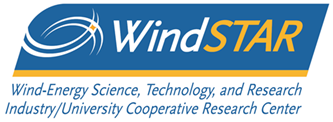Wind power is one of the fastest-growing renewable energy source in the world and the United States. The pace of growth requires the development of a talented workforce for research, development, manufacturing, and operations. Wind energy activities at UT Dallas (UTD) started in 2009, one year after the creation of the Department of Mechanical Engineering. The development of a wind energy program was appealing due to several factors including providing for learning and applying diverse engineering principles and technologies.
During 2009 and 2010, UTD participated in a proposal to the National Science Foundation (NSF) to establish an Engineering Research Center (ERC) for Offshore Wind Energy with the vision to supply 30% of the U.S. demand for electricity. This proposal was a collaboration among five universities (University of Houston, UTD, Texas A&M, The University of Massachusetts Amherst, and the University of Puerto Rico Mayaguez) with an ambitious request – asking for nearly $40 million over 10 years to develop the basic science and prototype technologies to enable GW-scale (gigawatt) electricity from offshore wind power. Our proposal rose to one of eleven finalists in the competitive NSF ERC program, but we were not selected for an award.
Lessons learned led to exploring ways in which UTD could become a destination of choice for wind energy research. This exploratory phase included conversations between UTD and the University of Massachusetts Lowell to establish a center to pursue “use-inspired” research for the wind power industry. The Center for Wind Energy Science, Technology and Research (WindSTAR) was founded as an NSF Industry-University Cooperative Research Center for five years beginning in 2014.
In 2015, UTD made a major investment to create a one-of-a-kind wind tunnel for research and education, the Boundary Layer and Subsonic wind Tunnel (BLAST). BLAST was made possible through the vision of former President David E. Daniel and former Jonsson School Dean Mark W. Spong. UTD later secured multi-million-dollar awards from The Advanced Research Projects Agency-Energy (ARPA-E). Awarded research seeks to develop advanced control systems to enable longer blades with fewer materials and to develop new wind turbine technology for offshore wind energy.
In 2019, WindSTAR was awarded its second phase by the National Science Foundation to continue until 2024. What started in 2014 with 5 projects and 9 member companies, has grown to 10 projects and 14 member companies spanning the supply chain of the wind power industry. In this same year, faculty members from WindSTAR applied to a new initiative created by the Office of Research to form a university-wide center for wind energy, and the Center for Wind Energy – UTD Wind – was officially born.
The timeline below summarizes the key milestones accomplished since WindSTAR was awarded its initial NSF grant.

NSF awards Phase One IUCRC

UTD invests $5.5 million
for wind tunnel & reno

BLAST opens on July 2018

ARPA-E/Arctura award for
Active Load Control of Wind Turbines

Team wins internal competition to form the Center for Wind Energy

NSF awards Phase II WindSTAR

